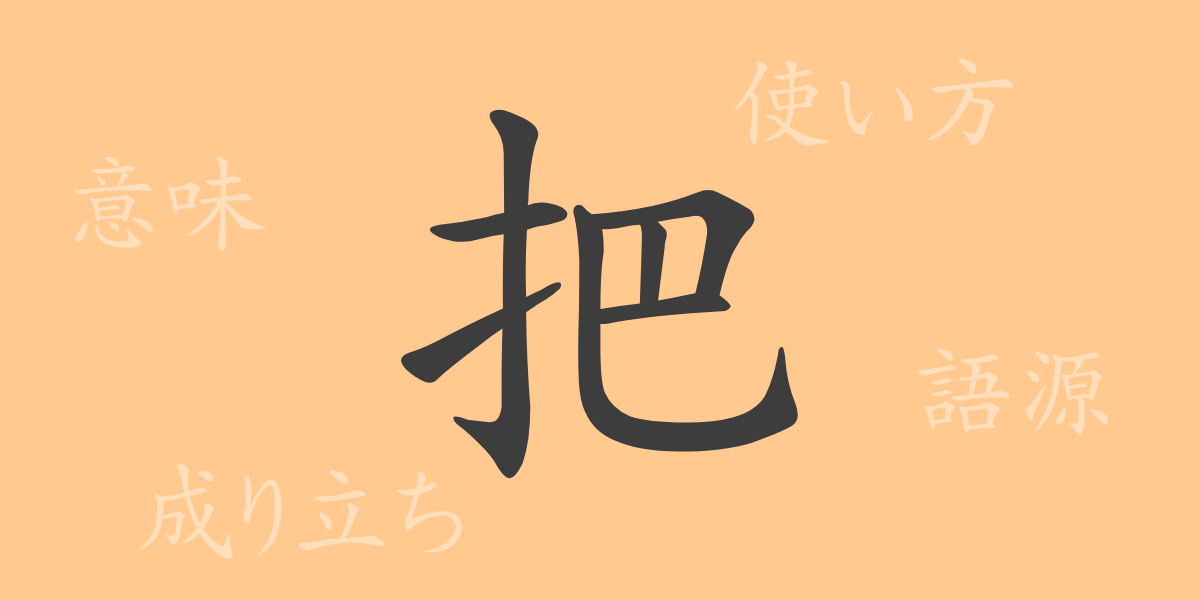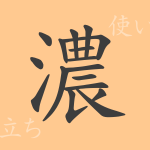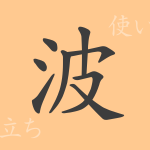Japanese characters are threads weaving through culture and history, each kanji deeply meaningful. This feature spotlights the kanji “把(は),” commonly encountered in daily life, yet special in the hands of the Japanese. We delve into “把” from its origins to its meanings, usage, and presence in idioms and phrases, unraveling its full story.
Origins of 把 (は)
The kanji “把” originates from ancient China, initially depicting the act of capturing something with the hand. Comprising “扌(てへん),” symbolizing the hand, and an old character also denoting the hand, it signified “firmly grasping.” Originally used to express the action of seizing, it evolved over time to its present form. In Japan, it developed uniquely following its introduction from China.
Meanings and Usage of 把
The kanji “把” conveys actions like “to grasp,” “to capture,” and “to hold.” It is used to denote firmly holding or controlling something tangible. Abstractly, it’s also applied to comprehend concepts, as in “grasping a problem,” where it means to understand and own the issue.
Readings, Stroke Count, and Radical of 把
The kanji “把” has multiple readings and uses, depending on the context:
- Readings: On-reading is “ハ,” Kun-readings are “つか.む” and “つか.まえる”
- Stroke Count: “把” consists of 7 strokes.
- Radical: Its radical is “扌(てへん),” representing the hand.
Idioms, Phrases, and Proverbs Involving 把
There are numerous idioms and phrases involving “把,” each illustrating the richness of Japanese expression. Here are a few examples:
- 把握(はあく): Precisely understanding a situation or content.
- 把持(はじ): Firmly gripping something or, metaphorically, grasping a situation psychologically.
- 支配を把握する: Firmly controlling a domain or range.
- 一把の米(いっぱのこめ): Literally “a handful of rice,” used to denote a small quantity, and by extension, any minimal amount.
Summary of 把
The kanji “把” symbolizes the act of firmly grasping, both physically and metaphorically. In Japanese, it is versatile, used not only for physical actions but also for expressing mental understanding and control. Each encounter with “把” in daily life is an opportunity to reflect on its profound history and meanings, deepening our appreciation of language.

























